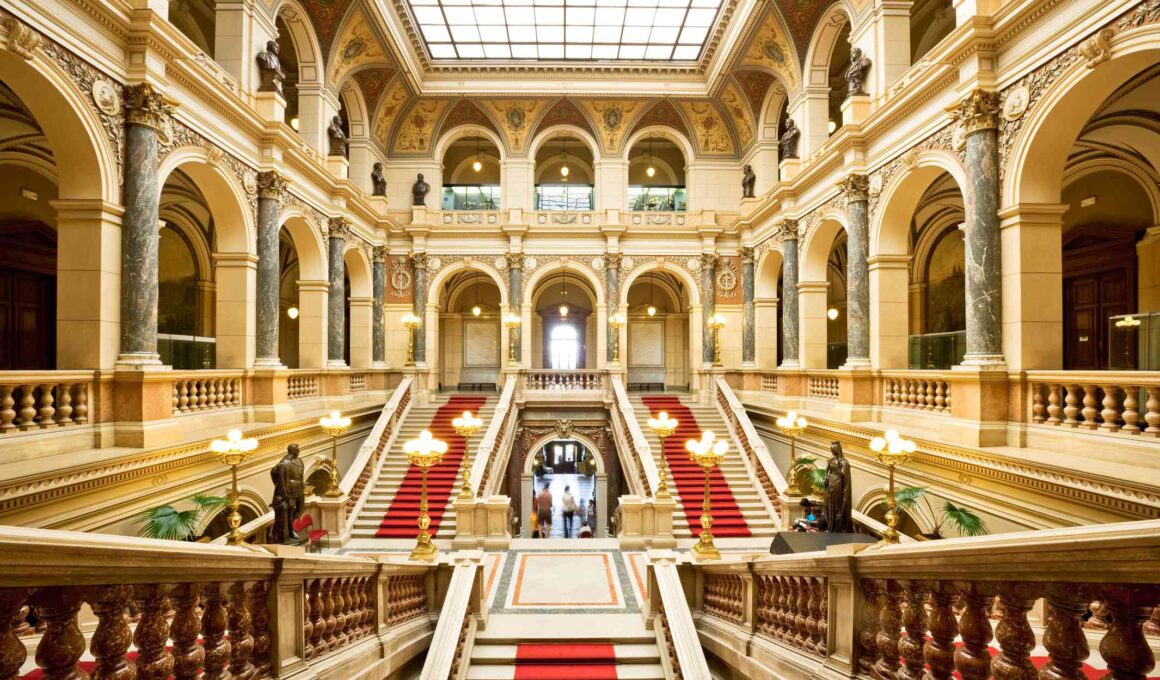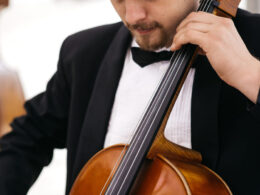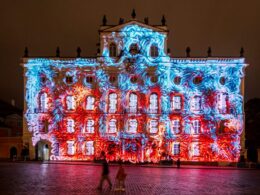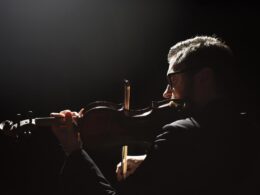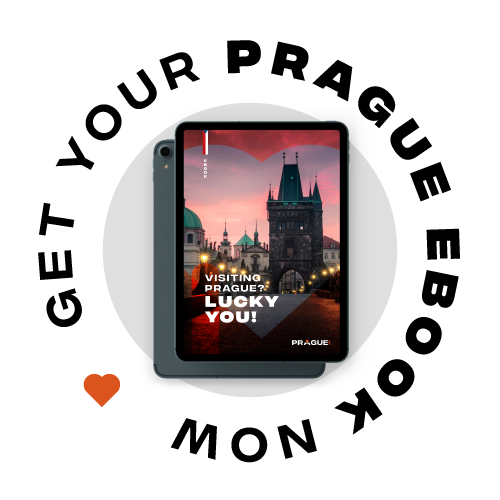Table of contents Show
The best museums and galleries
With everything Prague has to offer when it comes to sightseeing, food and nightlife, it’s no surprise its cultural scene is equally rich. Endowed with a varied and long list of impressive museums and galleries to visit, Prague is a top destination for art and history aficionados from all parts of the world.
Considering its complex past, and being home to some of the most influential writers and artists in history, Prague’s museums and galleries cover each and every artistic, literary and ideological topic you can think of. From classic art to contemporary and avant-garde, there are museums in Prague for everyone.
Check out our list below of the best museums and galleries in Prague to nurture your cultural and artistic appetite!
The National Museum, Prague
Founded in 1818 by Kašpar Maria Šternberg, Prague’s National Museum is the largest and most significant art institution in the entire Czech Republic. It currently features around 14 million items available to the public throughout the dozens of buildings that make up this impressive museum.
The National Museum covers a wide range of fields from both natural and social sciences and consists of 5 specialized institutes.
Having the largest art collection in the country containing art from all time periods, there are permanent and short-term expositions in which you will be able to gaze at original works from international artists such as Pablo Picasso, Vincent van Gogh, Paul Cézanne, Edvard Munch, among others, as well as renowned Czech artists Václav Hollar, Jan Preisler, František Kupka, Zdeněk Sýkora and Adriena Šimotová.
The National Museum is a definite must-see when in Prague for numerous reasons: because of its astonishing art collection and its historic value as well as the unique architecture of its many buildings. We especially recommend you check out the Old Building, located at the top of Wenceslas Square; the New Building and the connecting corridor, which you guessed it connects the two.
Learn more about Prague’s National Museum here.
National Technical Museum in Prague, Czech Republic
Dedicated to preserving the information and artifacts related to the history of technology, the National Technical Museum is the largest institution of its kind in the Czech Republic.
Officially founded in 1908, the origins of the National Technical Museum stretch back to 1862 when Vojtěch Náprstek created the first museum of industry with a focus on technological progress. It was in 1908 that the first official museum exhibition took place, led by a group of professors from the Czech Technical Univerity who gave the collection the format that is most similar to today’s museum.
Fans of technology, aviation, engineering, design, transportation and print will rejoice with the museum’s extensive and well-thought offer of permanent and short-term exhibitions. However, you don’t need to be a science enthusiast to enjoy the museum, as people from all backgrounds can be awed by its historic and cultural value, while learning a thing or who about the amazing history of scientific progress in and out of the Czech Republic.
Planning a visit to the National Technical Museum? Learn everything you need to know here.
The Dox Centre for Contemporary Art & Design, Prague
The DOX Centre for Contemporary Art & Design is the largest independent institution with a focus on contemporary art in the Czech Republic. An innovative space where art, literature, theatre and music merge within one multifunctional space designed to promote critical thinking and ongoing discussions around the most important topics of this era.
Located in Prague’s Holešovice district, the DOX is a multipurpose cultural and art hub that spans out across 3000 square meters and offers to the public innovative temporary exhibitions, a terrace, a café, a modern bookshop and its magnificent contemporary spaces.
Don’t miss the opportunity to check out the DOX while in Prague.
Learn more about the Dox, Centre for Contemporary Art & Design here.
Strahov Library, Prague
With over 200,000 volumes, Strahov Library is one of the most important and best-preserved historical libraries in the world, often also considered one of the most beautiful!
Built in 1140, this exquisite monastery became home to the Premonstratensians, an order of monks affiliated to Jesuits, and has survived centuries of political, religious and climatic turmoil.
Located near Prague Castle, visitors of this Baroque-style library will be amazed by its vast collection of original manuscripts, artifacts, and curiosities of the Middle Ages.
The Strahov Monastery features three main halls:
- Theology Hall: built between 1671 and 1674, it is the oldest part of the library and houses around 18,000 books of theological writing.
- Philosophical Hall: constructed in 1794 and adorned with stunning ceiling frescoes and two floors of walnut bookshelves filled with philosophy, geography, medicinal and legal manuscripts and books.
- Cabinet of curiosities: also known as the Wunderkammer, it displays a variety of rarities, natural science collections and archaeological excavations
Apart from its main halls, you’ll find two important churches: the Monastery Church of the Assumption of the Virgin Mary, built in 1148; and the St. Rochus Church, a donation from Emperor Rudolf II in 1603 as a symbol of gratitude for being spared from the plague.
Strahov Monastery is also home to a famous monastery brewery and beer garden, an excellent place to sip some Czech beer!
Jewish Museum, Prague
Founded in 1906 by historian Dr. Hugo Lieben and Dr. Augustin Stein, Prague’s Jewish Museum is one of the most visited in the Czech capital and the best-preserved complex of Jewish monuments in Europe.
During the Nazi occupation of Prague during World War II, the museum was turned into the Central Bureau of Jewish Emigration and the Jewish community suggested the entire collection be stored and preserved.
The following are all part of the Jewish Museum:
- Maisel Synagogue
- Spanish Synagogue
- Pinkas Synagogue
- Klausen Synagogue
- Jewish Ceremonial Hall
- Old Jewish Cemetery
Franz Kafka Museum, Prague
The Franz Kafka Museum is a fascinating space dedicated to world-renowned writer Franz Kafka. Born in Prague, Kafka is considered one of the most important literary figures of the twentieth century.
The museum’s collection comprises most of the author’s first editions as well as personal letters, diaries, photographs and drawings.
A visit to the Franz Kafka Museum will take you on a trip through the author’s life with equal literary and biographical significance.
The Museum’s collection was first created in Barcelona in 1999, but as of 2005 found a permanent home in Prague.
Whether you are already familiar with the life and work of Kafka or are eager to learn about them, the Franz Kafka Museum is an alluring way to get to know the city of Prague through his eyes the way he perceived it: equally secretive, mysterious and seductive.
Mucha Museum, Prague
The Mucha Museum is a unique gem dedicated to the life and works of the renowned Czech Art Nouveau artist, Alphonse Mucha. Situated in the heart of Prague, this museum offers an intimate look at Mucha’s artistic journey, showcasing an extensive collection of his most famous pieces.
Visitors can marvel at his iconic posters, decorative panels, and personal memorabilia, gaining insights into the mind of the artist who played a pivotal role in the Art Nouveau movement. The museum also features a variety of temporary exhibitions and educational programs that delve into the broader context of Mucha’s work and influence. A visit to the Mucha Museum is an enriching experience for art lovers and history enthusiasts alike, providing a deeper appreciation of Prague’s cultural heritage.
Schwarzenberg Palace, Prague
Schwarzenberg Palace is one of Prague’s most striking historical landmarks, showcasing the grandeur of Renaissance architecture. Located in the Hradčany district near Prague Castle, this majestic palace is a testament to the rich cultural and architectural heritage of the Czech Republic. The palace, which now houses part of the National Gallery’s extensive collection, features a stunning array of Baroque and Renaissance art. Visitors can explore its beautifully decorated halls and rooms, which are home to impressive exhibitions of painting, sculpture, and applied arts from the 16th to the 18th century. The intricate sgraffito facade of Schwarzenberg Palace is a marvel in itself, adding to the allure of this historic site. A visit to Schwarzenberg Palace not only offers a visual feast of art and architecture but also provides a fascinating glimpse into the opulent lifestyle of the Bohemian nobility.
Museum of Communism, Prague
The history of Communism in the Czech Republic is present throughout most of Prague through its buildings and important monuments. But if you really want to take an immersive look into the Communist regime in Prague and Czechoslovakia after World War II, a visit to the Museu of Communism in Prague will offer precisely that.
The museum was established in 2001 by American businessman and former politics student Glenn Spicker who commissioned documentary filmmaker Jan Kaplan the design of the museum.
The Museum of Communism’s collection showcases the history, politics, daily life, education, art, censorship, army and propaganda during the Communist regime, mainly from 1948 until the Velvet Revolution in 1989.
The museum also features a cinema where you can watch A Time of Shame, Silence, and Hope a documentary by Josef Císařovský about the period from 1969 to 1989, and a shop where mugs, posters and other souvenirs can be purchased.
A visit to this museum is an excellent way to dive into the Czech Republic’s recent past and understand the historic, social and political influence of the Communist Regime in the country.
We hope you have the time to visit and enjoy any of the museums featured on our list above. After all, a day visiting any -or several- of Prague’s incredible museums is a day well spent!
The Museum of Decorative Arts, Prague
The Museum of Decorative Arts in Prague is one of the largest collections of decorative arts in the Czech Republic. It houses a permanent exhibition of over 400,000 objects, including furniture, glass, ceramics, jewelry, and textiles. The museum also has a number of temporary exhibitions, which focus on specific topics or periods of time.
One of the most popular exhibits at the Museum of Decorative Arts is the interrogation room from the communist era. This room was used by the secret police to interrogate political prisoners. It is now a reminder of the dark days of communism in Czechoslovakia.
The museum is also home to a number of exhibits on Czech history. These exhibits trace the history of the Czech people from the Middle Ages to the present day.
